Related Research Articles
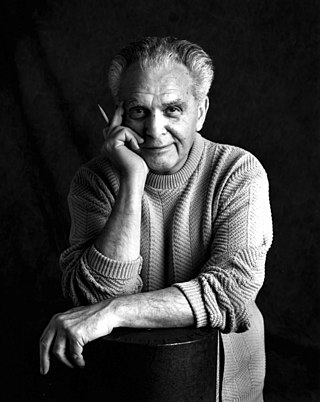
Jack Kirby was an American comic book artist, writer and editor, widely regarded as one of the medium's major innovators and one of its most prolific and influential creators. He grew up in New York City and learned to draw cartoon figures by tracing characters from comic strips and editorial cartoons. He entered the nascent comics industry in the 1930s, drawing various comics features under different pen names, including Jack Curtiss, before ultimately settling on Jack Kirby. In 1940, he and writer-editor Joe Simon created the highly successful superhero character Captain America for Timely Comics, predecessor of Marvel Comics. During the 1940s, Kirby regularly teamed with Simon, creating numerous characters for that company and for National Comics Publications, later to become DC Comics.

Charles Clarence Beck was an American cartoonist and comic book artist, best known for his work on Captain Marvel at Fawcett Comics and DC Comics.

Mark Stephen Evanier is an American comic book and television writer, known for his work on the animated TV series Garfield and Friends and on the comic book Groo the Wanderer. He is also known for his columns and blog News from ME, and for his work as a historian and biographer of the comics industry, such as his award-winning Jack Kirby biography, Kirby: King of Comics.
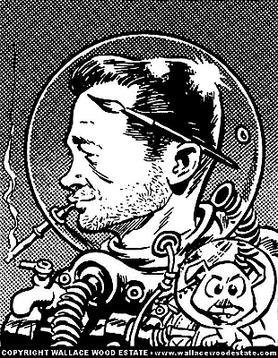
Wallace Allan Wood was an American comic book writer, artist and independent publisher, widely known for his work on EC Comics's titles such as Weird Science, Weird Fantasy, and MAD Magazine from its inception in 1952 until 1964, as well as for T.H.U.N.D.E.R. Agents, and work for Warren Publishing's Creepy. He drew a few early issues of Marvel's Daredevil and established the title character's distinctive red costume. Wood created and owned the long-running characters Sally Forth and Cannon.

Marvel Mystery Comics is an American comic book series published during the 1930s–1940s period known to fans and historians as the Golden Age of Comic Books. It was the first publication of Marvel Comics' predecessor, Timely Comics, a division of Timely Publications.

witzend, published on an irregular schedule spanning decades, is an underground comic showcasing contributions by comic book professionals, leading illustrators and new artists. witzend was launched in 1966 by the writer-artist Wallace Wood, who handed the reins to Bill Pearson from 1968 to 1985. The title was printed in lower-case.

Donald L. Heck was an American comics artist best known for co-creating the Marvel Comics characters Iron Man, the Wasp, Black Widow, Hawkeye and Wonder Man and for his long run penciling the Marvel superhero-team series The Avengers during the 1960s Silver Age of comic books.
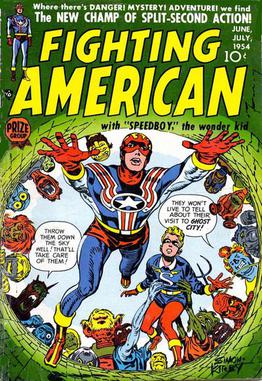
Fighting American is a superhero created in 1954 by the writer-artist team of Joe Simon and Jack Kirby. Published by the Crestwood Publications imprint Prize Comics, it was, contrary to standard industry practices of the time, creator-owned. Harvey Comics published one additional issue in 1966. One final inventoried tale was published in 1989, in a Marvel Comics hardcover collection of all the Fighting American stories.

Richard Bache Ayers was an American comic book artist and cartoonist best known for his work as one of Jack Kirby's inkers during the late-1950s and 1960s period known as the Silver Age of Comics, including on some of the earliest issues of Marvel Comics' The Fantastic Four. He is the signature penciler of Marvel's World War II comic Sgt. Fury and his Howling Commandos, drawing it for a 10-year run, and he co-created Magazine Enterprises' 1950s Western-horror character the Ghost Rider, a version of which he would draw for Marvel in the 1960s.
TwoMorrows Publishing is a publisher of magazines about comic books, founded in 1994 by John and Pam Morrow out of their small advertising agency in Raleigh, North Carolina, United States. Its products also include books and DVDs.
A script is a document describing the narrative and dialogue of a comic book in detail. It is the comic book equivalent of a television program teleplay or a film screenplay.

Captain Victory is a comic book originally created, written and drawn by Jack Kirby. It was first published by American comic book publisher Pacific Comics in 1981. Kirby agreed to create a comic for the fledgling publisher because Pacific promised him full creative control, and ownership of the characters.

Weird Mystery Tales was a mystery horror comics anthology published by DC Comics from July–August 1972 to November 1975.
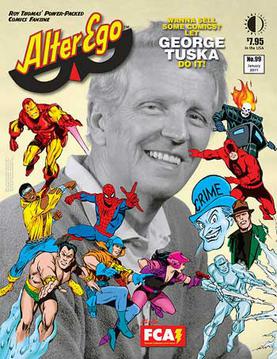
Alter Ego is an American magazine devoted to comic books and comic-book creators of the 1930s to late-1960s periods comprising what fans and historians call the Golden Age and Silver Age of Comic Books.
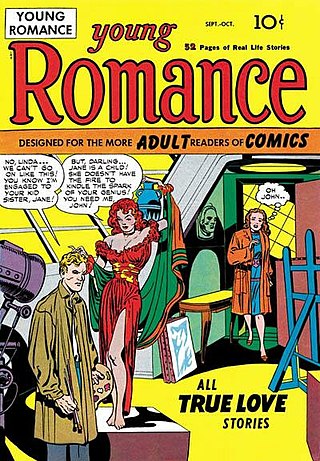
Young Romance is a romantic comic book series created by Joe Simon and Jack Kirby for the Crestwood Publications imprint Prize Comics in 1947. Generally considered the first romance comic, the series ran for 124 consecutive issues under Prize imprint, and a further 84 published by DC Comics after Crestwood stopped producing comics.
Ken Bruzenak is an American comic book letterer, primarily known for his work on Howard Chaykin’s American Flagg! Bruzenak's lettering and logowork was integral to the comic's futuristic, trademark-littered ambience. During the course of his career, Bruzenak has been closely associated with both Chaykin and Jim Steranko.
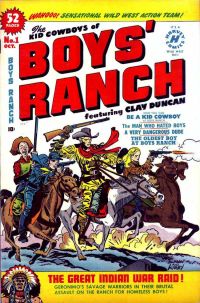
Boys' Ranch was a six-issue American comic book series created by the veteran writer-artist team of Joe Simon and Jack Kirby for Harvey Comics in 1950. A Western in the then-prevalent "kid gang" vein popularized by such film series as "Our Gang" and "The Dead End Kids", the series starred three adolescents—Dandy, Wabash, and Angel—who operate a ranch that was bequeathed to them, under the adult supervision of frontiersman Clay Duncan. Supporting characters included Palomino Sue, Wee Willie Weehawken, citizens of the town Four Massacres, and various Native Americans, including a fictional version of the real-life Geronimo.
Bill Spicer is an editor and publisher who spearheaded the 1960s movement away from commercial comics, opening the gateway to underground, alternative, and independent comics, notably with his publication Graphic Story Magazine.
Ben Oda was a Japanese-American letterer for comic books and comic strips.
Douglas Bruce Berry was an American comic book artist who is best known as the inker of several of Jack Kirby's comic book series in the 1970s.
References
- ↑ ed. by John Morrow, Jon B. Cooke (28 August 2017). Kirby100: 100 Top Creators Celebrate Jack Kirby's Greatest Work. TwoMorrows Publishing. pp. 192–194.
{{cite book}}:|author1=has generic name (help) - ↑ Evanier, Mark (2008). Kirby: King of Comics. Abrams Books. p. 23. ISBN 9780810994478.
- ↑ Morrow, John, ed. (19 February 2004). Collected Jack Kirby Collector. TwoMorrows Publishing. p. 129. ISBN 1893905004.
- ↑ Hoppe, Rand (11 June 2009). "Jack Kirby's Street Code at MoCCA". Jack Kirby Museum & Research Center. Archived from the original on 9 October 2018. Retrieved 30 May 2018.